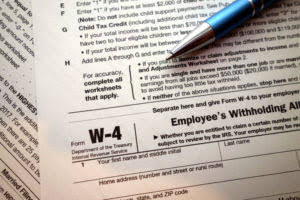Times Interest Earned Ratio TIE Formula + Calculator
Long-term loans with fixed interest rates may stabilize the TIE ratio, while variable-rate loans could introduce volatility, especially in fluctuating interest rate environments. This ratio is especially useful for lenders and investors keen to understand the risk of offering a business credit or capital. The Times Interest Earned Ratio, or TIE, is a financial metric used to gauge a company’s ability to settle its interest obligations. At this point, it can be challenging for businesses, especially those having to deal with large volumes of transactions from various sources to account for them correctly. In this article, we’ll tackle the concept of TIE, why it’s crucial for businesses, how to measure it, what constitutes a good TIE ratio, and strategies for improving it. By adding back depreciation and amortization, this ratio considers a cash flow proxy that’s often used in capital-intensive industries or for companies with significant non-cash charges.
This exceptionally high TIE ratio indicates minimal default risk but might suggest the company is under-leveraged. Shareholders might question whether more debt financing could accelerate growth and enhance equity returns. A good ratio indicates that a company can service the interest on its debts using its earnings or has shown the ability to maintain revenues at a consistent level. A well-established utility will likely have consistent production and revenue, particularly due to government regulations. Other industries, such as manufacturing, are much more volatile and may often have a higher minimum acceptable interest coverage ratio of three or higher. A company’s ratio should be evaluated to others in the same industry or those with similar business models and revenue numbers.
Debt Service Coverage Ratio (DSCR)
For instance, a ratio of 5 means the company earns five times its interest expenses, suggesting a comfortable buffer. Conversely, a lower ratio may signal challenges in meeting debt commitments, raising concerns for stakeholders. Industries with high capital expenditures, often reliant on debt financing, find this metric particularly relevant. This ratio is important because it can give investors and creditors an idea of how well a company is able to meet its free online bookkeeping course and training financial obligations. A high ratio indicates that a company is generating more income than it is paying in interest, while a low ratio indicates that the company is not generating enough income to cover its interest payments.
What Are the Limitations of the Interest Coverage Ratio?
The “coverage” represents the number of times a company can successfully pay its obligations with its earnings. A lower ratio signals the company is burdened by debt expenses with less capital to spend. When a company’s interest coverage ratio is 1.5 or lower, it can only cover its obligations a maximum of one and one-half times. The interest coverage ratio is a debt and profitability ratio shows how easily a company can pay interest on its outstanding debt.
Times interest earned
As you can see, creditors would favor a company with a much higher times interest ratio because it shows the company can afford to pay its interest payments when they come due. A good TIE ratio is subjective and can vary widely depending on the industry, economic conditions, and the specific circumstances of a company. However, as a general rule of thumb, a TIE ratio of 1.5 to 2 is often considered the minimum acceptable margin for assuring creditors that the company can fulfill its interest obligations. Times interest earned (TIE) or interest coverage ratio is a measure of a company’s ability to honor its debt payments.
Why Calculate TIE Ratio
The Debt-to-Equity Ratio is a measure of a company’s financial leverage, indicating the proportion of debt used to finance the company’s assets relative to equity. While the TIE ratio focuses on the company’s ability to cover interest payments, the Debt-to-Equity Ratio provides insights into how much of the company is financed by debt versus shareholder equity. An increasing ratio may reflect improving operational efficiency or reduced debt, while a declining trend could signal cash flow challenges or rising borrowing costs. External factors like interest rate changes also influence the ratio, affecting both interest expenses and earnings. The times interest earned ratio looks at how well a company can furnish its debt with its earnings. It is one of many ratios that help investors and analysts evaluate the financial health of a company.
EBITDA Coverage Ratio
The resulting figure reflects the earnings generated solely from the core business activities, excluding any financial or tax-related considerations. Understanding a company’s financial health is crucial for investors, creditors, and management. The Times Interest Earned Ratio is a crucial financial metric to assess a company’s ability to meet its interest obligations. This ratio is the number of times a company could cover its interest expenses with its operating profit. A higher TIE ratio suggests that the company is generating substantial profits relative to its interest costs.
- Conversely, a TIE ratio below 1 suggests that a company cannot meet its interest obligations from its operating income alone, which is a cause for concern.
- Additionally, extending the maturity of existing debt can spread out payments, making them more manageable.
- When a company struggles with its obligations, it may borrow or dip into its cash reserve, a source for capital asset investment, or required for emergencies.
- Generating enough cash flow to continue to invest in the business is better than merely having enough money to stave off bankruptcy.
- Many loan agreements include TIE ratio covenants requiring borrowers to maintain minimum coverage levels, often between 1.5 and 3.0 depending on industry and company size.
- The higher the ratio, the more capable the company is of meeting its interest payments.
Paying down debt not only reduces the principal amount owed but also lessens interest burdens. Additionally, what are the invoice processing steps extending the maturity of existing debt can spread out payments, making them more manageable. These actions increase the TIE ratio by lowering the interest portion of the equation. While this TIE might seem low by general standards, it’s typical for utilities due to their capital-intensive nature and stable regulated revenues. Investors would compare this to industry peers rather than applying general benchmarks. Adam Hayes, Ph.D., CFA, is a financial writer with 15+ years Wall Street experience as a derivatives trader.
Moreover, it’s worth mentioning that interest coverage ratios might not include all financial obligations. A higher TIE ratio usually suggests that a company has a more robust financial position, as it signifies a greater capacity to meet its interest obligations comfortably. This, in turn, may make it more attractive to investors and lenders, as it indicates lower default risk. In other words, TIE serves as a litmus test for a company’s financial well-being, providing a clear picture of its ability to manage and generally accepted accounting principles gaap service its debt through its operational income. A very low TIE ratio suggests that the company may struggle to meet its interest payments. This can lead to financial distress, higher borrowing costs, or even bankruptcy if not addressed.
Now, let’s take a more detailed look at why businesses might want to consider TIE to manage finances wiser and get a more accurate picture of their financial stability. There are several ways in which TIE impacts business’s assessment of its financial health. Yes, if a company’s EBIT is negative, the TIE ratio will also be negative, indicating that the company is not generating sufficient earnings to cover its interest expenses.
This quantitative measure indicates how well a company’s earnings can cover its interest payments. A higher TIE ratio suggests that a company is more capable of meeting its debt obligations, which typically translates to lower credit risk and better borrowing conditions. TIE, or Times Interest Earned, is an important metric a business might want to understand to accurately evaluate and manage cash flow.
- A higher TIE ratio suggests that a company is more capable of meeting its debt obligations, which typically translates to lower credit risk and better borrowing conditions.
- For instance, the debt-to-equity ratio compares a company’s total liabilities to its shareholder equity to assess leverage.
- For instance, a company with substantial non-operating income may appear weaker than it truly is when only EBIT is considered.
- The Times Interest Earned Ratio assesses the number of times a company could cover its interest payments with its current pretax earnings.
- A prudent approach to debt means taking on only as much debt as the business can comfortably handle, considering its cash flow and profitability.
- It is a critical indicator of creditworthiness that investors and creditors scrutinize to understand a borrower’s financial stability.
Companies with consistent earnings can carry a higher level of debt as opposed to companies with more inconsistent earnings. She holds a Bachelor of Science in Finance degree from Bridgewater State University and helps develop content strategies. Shaun Conrad is a Certified Public Accountant and CPA exam expert with a passion for teaching. After almost a decade of experience in public accounting, he created MyAccountingCourse.com to help people learn accounting & finance, pass the CPA exam, and start their career.
While all debt is important when calculating the interest coverage ratio, companies may isolate or exclude certain types of debt in their interest coverage ratio calculations. As such, when considering a company’s self-published interest coverage ratio, it’s important to determine if all debts are included. The ratio indicates how many times a company could pay the interest with its before tax income, so obviously the larger ratios are considered more favorable than smaller ratios.
The TIE ratio is just one of many solvency ratios that can be used to assess a company’s financial health. However, it is an important ratio to consider when making an investment or lending decision. The TIE ratio is a useful tool for assessing a company’s financial health and its ability to service its debt. A high TIE ratio signals that a company has ample earnings to pay off its interest expenses, which generally denotes strong financial health.






